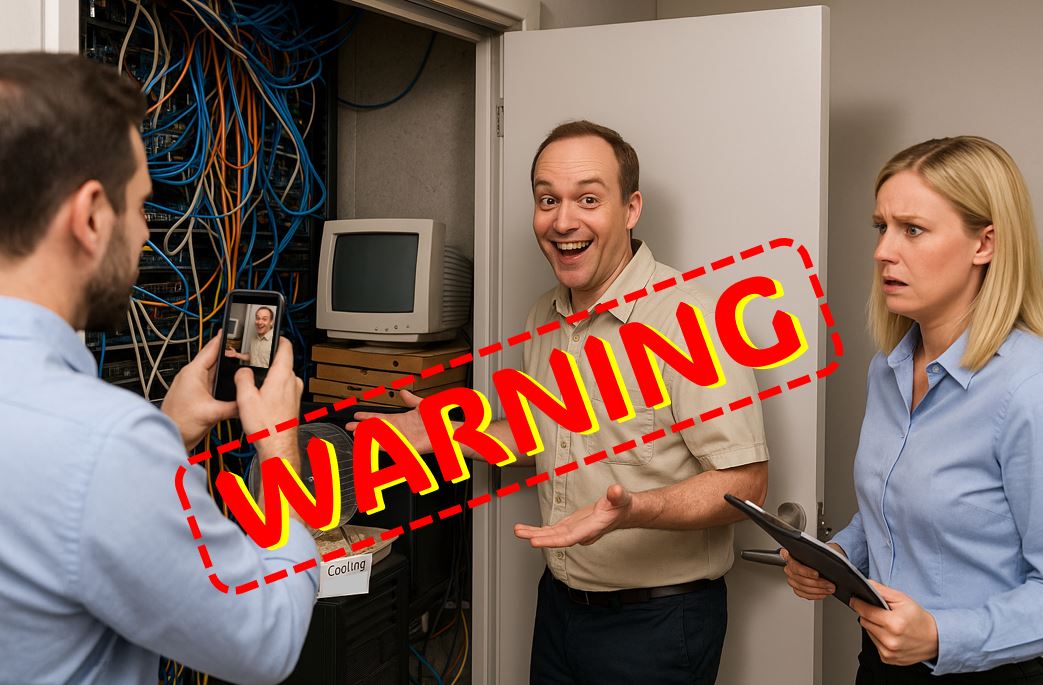GETTING READY TO EXIT YOUR BUSINESS? Experts say advance preparation is key to obtaining the best price possible. How far in advance? “”Best practice for entrepreneurs is to have an idea of what you want to do with your business the day you started it,”” says Bob Dale, partner at Austin Dale Group, an M&A advisory firm for SMB tech businesses. “”Almost nobody does that.””
Indeed, research from UBS Wealth Management Americas, conducted in 2018, found that 48% of surveyed business owners have no formal exit strategy in place, and 75% of owners planning to sell believe they could do so in a year or less.
Dale says MSPs in particular are often “”accidental entrepreneurs. The business kind of grew up around them, because they were really good at what they did.”” So when issues like retirement, divorce, illness, or just plain burnout arise, there is no exit plan in place, he says.
Given that reality, Dale and other M&A experts say a good rule of thumb is to start planning three to five years in advance of selling your MSP business, implementing some long-term, medium-term, and short-term steps that will increase the value of your company and boost your sale price.
The Long View (Three to Five Years Out)
If you’ve made the decision to sell three to five years out, now’s the time to assess the value of your business and see if it meets your financial goals, says Amy Babinchak, an MSP herself and co-owner of SellMyMSP, a listing service for buying and selling IT services companies. Three common valuation methods are earnings valuation, revenue valuation, and gross profit valuation.
Take a good, hard look at your valuation, Babinchak suggests, and then ask yourself how you feel about that number. Does it meet your needs and expectations? “”If it doesn’t, you’ve got time to change that and add more value to your business,”” she notes.
A key step is to examine profitability per customer and start to scrub the least profitable ones from your client list, according to Reed Warren, CEO of IT Valuations, an M&A facilitator and business valuation firm. “”You should be consistently looking at your customer base and as a general rule, letting go your bottom 5% to 10% of your customer base every year,”” he says. “”They’re consuming the bulk of your resources. They’re your most painful customers. And if you’re not making money on a customer, the best thing you can do is bless your competition with a poor customer.””
Reed, of course, does not suggest you “”drop kick”” customers to the curb. Instead, explain to them that you’re no longer able to meet their needs and will transition them to another provider.
The house cleaning process is also a good time to determine what makes your MSP unique and how you can convey that to a buyer—do you have a vertical focus or market niche? Most often, Babinchak says, “”somebody’s going to add your business into their business. So, the things that they’re going to value are the things that are the core defining part of your company … and does your client base match that description?””
Another way to increase the value of your business is to make it less dependent on you, says Dale, who recommends building a management team or at least a No. 2 person who can run the business in your absence if you don’t already have one. Otherwise, when you’re ready to sell, you could easily “”get tied into another three years of being in the business to get your earnout,”” Warren says.
The Medium View (Two to Three Years Out)
Now is the time to get your financial house in order. If you are not already compliant with Generally Accepted Accounting Principles, at a minimum “”you should be GAAP aligned,”” Warren says. “”A lot of that’s going to be getting your appropriate labor costs,”” he notes. That means making sure the cost of goods sold for both products and services includes all direct costs such as labor and support.
“”The clearer your financials are, the less risky the transaction becomes from a buyer’s perspective.”—Reed Warren, CEO, IT Valuations
Some MSPs may balk at this exercise, Warren acknowledges, because it doesn’t change the bottom line. However, he stresses, “”The clearer your financials are, the less risky the transaction becomes from a buyer’s perspective. So if they don’t have really good clarity around your service offerings or your revenue streams and your gross margin per revenue stream … they don’t really know how much you’re making off of those different revenue streams.”” Buyers will also want to see consistent year-over-year measurement of those streams, he adds.
Getting an independent audit or review of your financials is a smart idea as well, Warren adds. “”An independent review is hugely important from a transaction perspective or valuation perspective—somebody else other than your CPA or tax adviser saying these numbers are good.””
Another good medium-term task is getting employee and customer contracts in shape—and that means making sure you actually have contracts, Dale says. Make sure the customer contracts are assignable if possible, too, he continues. Deals often get held up because the contracts were difficult to transfer to a new owner. The best time to build in assignability, if you don’t already have it, is at contract renewal time, Dale adds.
All contracts, incorporation documents, policies, and other business documents should be clear and readable, Babinchak says, and assembled together in a binder, so when it’s time to sell they’re ready to hand to an interested buyer.
Warren suggests putting together a two-page summary of your business as well that includes an overview, your financial story, and your future trajectory. Keep it handy, moreover. “”Almost everybody is looking for sellers today,”” he notes.
Continue building the management team too, Dale advises, and if your business isn’t big enough to have a board of directors, enlist outside advisers such as a CPA, an attorney, and an M&A adviser.
The Short View (One Year Out)
Once you’re about ready to hang the “”for sale”” sign, set goals for the transaction. Dale suggests asking questions like: What do you think the company’s likely to sell for? What deal terms will be acceptable? What kind of transition is realistic given how your company operates? Do you want to stay involved? Do you need to incent the management team to stay with the company post-acquisition?
Setting your price requires going through the valuation process again. Potential buyers, Dales says, will want to know: “”What are your earnings? What’s your net income? What’s your adjusted earnings, or EBITDA [earnings before interest, taxes, depreciation, and amortization]?”” Buyers will also want to know how much of your revenue is recurring, he adds. More qualitative issues like strength of management team and market location will factor into the price as well.
“”The rule of thumb is, the longer the business owner stays, the more the buyer will pay for the business.””—Amy Babinchak, MSP and Co-Owner, SellMyMSP
If your goal is to completely exit the business, determine how long you will stay during the transition. “”The rule of thumb is, the longer the business owner stays, the more the buyer will pay for the business,”” Babinchak says, “”because it’s going to add to the stability of the company.”” This is especially pertinent to buyers with a nationwide footprint, she adds.
At this point you’ll want to anonymously advertise your business. You can enlist a broker or utilize a listing service, or if you feel comfortable you can quietly talk it up with network connections you trust, Babinchak says. In general, adds Dale, “”owners don’t want the outside world to know that they’re for sale.””
When to inform employees is a tricky issue. The management team will need to be in the loop, of course, but Babinchak advises against telling the rest of the staff that the business is on the market. “”Every person I’ve talked to who sold a business with employees, the employees were unhappy about it. Whether they find out at the end or well beforehand, they’re going to go through that crisis of uncertainty anyway, and that could be really detrimental for the business if they decide to jump ship now and you haven’t sold yet. It’s a tough situation, but I think it’s better to wait until the end.””
Once you have a buyer, Dale says, expect a typical deal to take six to nine months to complete.
Finally, be aware that selling your firm can be emotional. Preparing for that is one of the most difficult issues owners face, Warren says, adding that it’s important to separate your identity from the business. “”Understand that the buyer is not going to appreciate the business as much as you do. It’s not that they don’t care about it, they’re going to love it, but this was your baby.”” Warren says deals have fallen apart at the 11th hour because the owner has failed to become emotionally disengaged.
He encourages owners to enlist an exit planning coach to work through what your world will look like after the sale too. “”As much as you may feel like golfing every day sounds like a really fun thing, it takes about six weeks and you’re going to wonder what to do with your life.””
Avoid These Common M&A Mistakes
M&A experts say there are several common mistakes MSPs make when it comes to selling the business:
Failure to get your books in order. Your financials need to give potential buyers a clear picture of your business. “”Your books might be too simple is generally the common thing that we see, where it’s just money in, money out,”” says SellMyMSP’s Amy Babinchak. “”While that’s very interesting, that doesn’t really tell the potential buyer where you’re making money. So you may need to break out some more categories in your chart of accounts so that the buyers can actually see where you make money.””
Failure to clear up legal matters. Unresolved legal issues are, at a minimum, embarrassing, notes Bob Dale of Austin Dale Group. “”It could hurt a deal, or even kill a deal if these surprises come up while you’re in the deal process.””
Failure to engage a financial planner. Reed Warren of IT Valuations calls this “”the biggest mistake most people make when they get ready to sell, especially when they’re planning on exiting. They don’t engage that wealth manager/financial planner early enough.”” Many MSPs, he says, wait until the transaction is done before planning how to manage the payout. “”When you get the big check, it’s too late to figure it out.””
Failure to try to sell your business. Small MSPs often think they’re too small to attract a buyer, or just never make a decision to sell, and instead gradually wind down until they shut the door, according to Babinchak. “”It just seems like such a wasted opportunity to cash in on that asset that they spent 20 years creating.”” It’s a misconception too, she adds. “”From our experience those small ones are really easy to sell. They’ll be snatched up by someone locally and the business owner can put a few hundred thousand dollars in their pocket.””
















